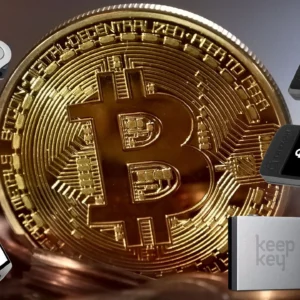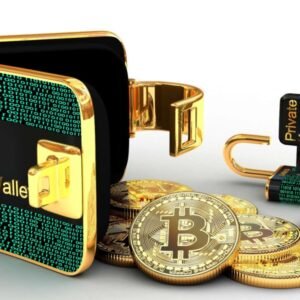Introduction
The decentralized finance (DeFi) space has been growing rapidly, offering users new and innovative financial opportunities. However, with its growth comes an increasing number of security threats. The latest incident to shake the DeFi community involves the Four.meme platform exploited in a targeted attack, leading to the theft of $130,000 in liquidity. This exploit has raised serious concerns about the security of meme token projects and the vulnerabilities within decentralized exchanges (DEXs).
In this article, we’ll explore what happened, how the exploit was executed, and what it means for both investors and the DeFi ecosystem as a whole. We’ll also analyze security measures that could have potentially prevented this attack and what steps developers and traders can take to protect themselves from future incidents.

1. What Happened? A Breakdown of the Four.meme Exploit
The Four.meme platform exploited incident unfolded when an attacker successfully manipulated the platform’s smart contract, draining liquidity and leaving investors at a loss. Here’s a step-by-step breakdown of how the exploit occurred:
a. The Vulnerability in Smart Contracts
Many DeFi projects operate using smart contracts that facilitate automated transactions without the need for intermediaries. However, poorly written smart contracts can contain vulnerabilities that malicious actors can exploit. In the case of Four.meme, an oversight in the contract’s liquidity functions allowed the attacker to withdraw more funds than intended.
b. How the Attacker Drained the Liquidity
The attacker reportedly exploited a flaw in the contract’s token swap mechanism, enabling them to manipulate token prices and drain liquidity pools. This method is similar to previous DeFi exploits, where hackers use flash loans or price manipulation to siphon funds out of liquidity pools.
c. The Aftermath: Panic Selling and Price Crash
Once news spread that the Four.meme platform exploited its users, panic selling ensued. Investors rushed to sell their tokens, further driving down the price. Many traders were left with worthless holdings, while the attacker managed to escape with $130,000 in stolen assets.
This incident highlights the ongoing security challenges within the DeFi space and underscores the need for more robust security measures to prevent similar exploits.
2. How DeFi Exploits Like This Happen
While each DeFi exploit has unique characteristics, most attacks share common tactics that hackers use to manipulate vulnerabilities in smart contracts. The Four.meme platform exploited case fits within a larger trend of liquidity theft incidents in the DeFi ecosystem.
a. Smart Contract Bugs and Loopholes
The most common cause of DeFi exploits is poorly audited smart contracts. Many projects rush to launch without thoroughly testing their code, leading to exploitable loopholes. Even well-established projects have fallen victim to attacks due to undetected vulnerabilities in their contracts.
b. Flash Loan Attacks
Flash loans allow users to borrow large sums of crypto without collateral, as long as the loan is repaid within the same transaction. Attackers often use flash loans to manipulate token prices and drain liquidity pools, similar to what happened in the Four.meme platform exploited incident.
c. Liquidity Pool Exploitation
Decentralized exchanges (DEXs) rely on liquidity pools, where users deposit funds to facilitate trading. If a hacker can manipulate these pools—whether by exploiting price oracles, tricking the contract into overpaying, or draining reserves—they can steal massive amounts of funds.
d. Rug Pulls and Insider Exploits
While not confirmed in this case, some DeFi projects have fallen victim to “rug pulls,” where developers or insiders intentionally drain liquidity and disappear with investors’ funds. Though different from direct smart contract exploits, rug pulls highlight the importance of trust and due diligence when investing in new crypto projects.
The Four.meme platform exploited incident serves as a stark reminder that DeFi security is still in its infancy, and both developers and investors must exercise extreme caution.
3. The Impact of the Four.meme Exploit on Investors and the Market
When a DeFi project is exploited, the effects ripple through the entire crypto community. The Four.meme platform exploited incident had several major consequences, not just for investors but also for the broader market.
a. Financial Losses for Investors
The most immediate impact of the attack was the $130,000 in stolen liquidity. Many investors lost significant portions of their holdings, and the token’s value plummeted as a result. For some, this loss was devastating, wiping out days or even weeks of trading profits.
b. Loss of Trust in Meme Token Projects
Meme coins have gained massive popularity, often fueled by viral marketing and online communities. However, security incidents like this one erode trust in these projects. Investors may become more hesitant to put their money into meme tokens, fearing similar exploits.
c. Regulatory Scrutiny on DeFi Platforms
As DeFi exploits become more common, regulators worldwide are paying closer attention to the industry. Authorities may use incidents like the Four.meme platform exploited case as justification for stricter regulations, which could impact the future growth of decentralized finance.
d. Calls for More Security and Transparency
Following this exploit, there have been increased calls for better security measures in DeFi projects. Some industry leaders have suggested mandatory smart contract audits, improved liquidity protection mechanisms, and greater transparency from developers.
Ultimately, the Four.meme platform exploited case is another cautionary tale for the crypto community, emphasizing the importance of thorough research and risk management before investing in any DeFi project.
4. How to Protect Yourself from Similar DeFi Exploits
While DeFi remains a lucrative and innovative space, it also carries significant risks. Investors must take proactive steps to safeguard their assets and avoid falling victim to similar incidents like the Four.meme platform exploited attack.
a. Always Research Before Investing
Before investing in any DeFi project, conduct thorough research:
- Check if the project has undergone a professional smart contract audit.
- Investigate the team behind the platform—are they reputable and experienced?
- Look for red flags like anonymous developers, low liquidity, or unrealistic promises.
b. Diversify Your Investments
Never put all your funds into a single project, especially in the highly volatile DeFi space. Diversification helps minimize risk in case one investment fails due to an exploit or market downturn.
c. Use Secure Wallets and Trading Strategies
- Store your funds in reputable wallets rather than keeping them on exchanges.
- Consider using hardware wallets for extra security.
- Avoid using sketchy or unaudited smart contracts that could be vulnerable to attacks.
d. Stay Informed on Security Best Practices
DeFi is constantly evolving, and so are hacking techniques. Staying updated on the latest security practices can help you avoid falling victim to scams and exploits. Follow trusted crypto security researchers and participate in community discussions about potential risks.
The Four.meme platform exploited case is a harsh reminder that while DeFi presents exciting opportunities, it is also a breeding ground for sophisticated cyber threats. Taking these precautionary measures can help investors mitigate risks and protect their hard-earned assets.
Conclusion
The Four.meme platform exploited incident is yet another example of the dangers lurking within the DeFi space. A smart contract vulnerability led to $130,000 in stolen liquidity, leaving investors scrambling and raising questions about the security of meme token projects.
While DeFi offers revolutionary financial opportunities, it also requires users to be highly vigilant. Proper research, diversification, and staying informed about security threats can help traders avoid similar pitfalls in the future.
What are your thoughts on the Four.meme platform exploited case? Do you think DeFi platforms need better security, or should investors take more responsibility for their risks? Share your opinions in the comments below!







This Post Has One Comment